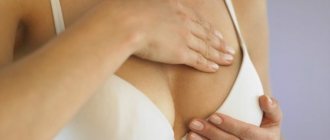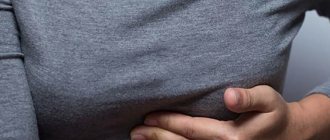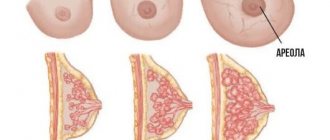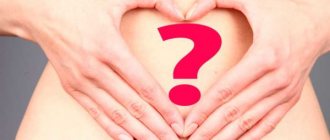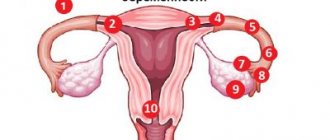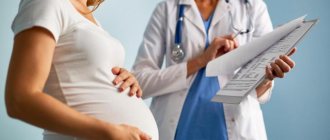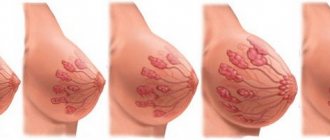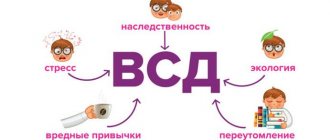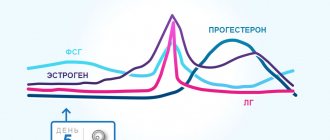Pain in the mammary glands (both or one, it doesn’t matter) is called mastalgia. And she is familiar to 70% of Breast Pain women. However, doctors insist: discomfort always indicates a deviation from the norm - sometimes harmless, and sometimes dangerous.
But only 15% of women with chest pain actually require serious treatment.
However, it is important to make sure that you are not part of this unlucky percentage. Look for your symptoms in the list of the main causes of Why Do My Breasts Hurt? mastalgia.
PMS or ovulation
During ovulation or before your period, your breasts may become swollen and painful. This is normal, this is how hormones work. True, as in the case of menstruation, you should be more careful: cyclic pain should not be severe. If unpleasant sensations do not allow you to forget about yourself, consult a gynecologist as soon as possible.
Normal cyclic pain can be recognized by several signs:
- both breasts hurt, mainly in the upper and central (nipple level) parts;
- the breast “fills up”: it swells, becomes harder to the touch;
- sometimes the pain radiates to the armpits;
- painful sensations occur no earlier than 2 weeks before menstruation and then disappear;
- you are of reproductive age.
What to do about it
Most often, discomfort during PMS or ovulation is quite tolerable. To reduce pain, you can take painkillers such as ibuprofen, paracetamol, or naproxen.
If the pain bothers you every cycle and is already fed up, complain to your gynecologist. Your doctor will help you choose oral contraceptives or, if you are already taking them, adjust your dosage.
Breast diseases
In most cases, if the breasts become sore during pregnancy, this is a natural process. But sometimes pain syndrome signals serious health problems. When your chest hurts and the test is negative, the reason for such sensations is of a different nature.
If the source of pain is located in the center of the chest, this may indicate heart disease.
The cause of pain can be hormonal drugs taken by a woman; antidepressants can also cause this effect. In some cases, the cause of pain is pathological processes that occur in the chest. If your period is late and pregnancy still does not occur, you need to visit a mammologist. The specialist will prescribe a diagnosis and determine the cause of the disease.
Pain not associated with premenstrual syndrome is called non-cyclic, or more precisely, non-cyclic mastalgia. It can affect both or one breast. The causes of the disease are very different, including a violation of the anatomy of the mammary gland, and a developed cyst or fibroma.
The source of pain can be nerves or joints, and discomfort begins to be felt in the chest. Non-cyclic mastalgia can be triggered by an imbalance of fatty acids in the mammary gland, in which case the cells become more sensitive to hormones.
Hormonal imbalance
Mastalgia is often caused by two hormones - estrogen and progesterone. At different periods of life, their ratio may change, and this results in swelling and discomfort in the chest. Most often, hormonal imbalance occurs during:
- puberty (puberty);
- pregnancy (usually the first trimester);
- breastfeeding;
- menopause.
What to do about it
If moderate pain occurs during any of the periods listed above, it is generally normal. It is enough to endure the discomfort.
But let us emphasize again: there is no need to endure severe pain! If it is present, go to the gynecologist.
Alarming symptoms - see a doctor immediately
In some cases, to avoid serious complications, it is strongly recommended to seek the services of a qualified healthcare professional. There are several breast diseases that cannot be delayed. Timely assistance will save you from many problems. What kind of pathologies are these, and what are their symptoms?
Mastopathy
This is a benign formation that occurs due to an imbalance of female sex hormones. In the thickness of the glands, compactions are formed, located in a chaotic manner. Subsequently, they grow and cause discomfort.
Characterized by:
- slight pain in the nipples, usually before the cycle;
- unusual discharge in the form of cloudy drops that protrude when pressed;
- swelling.
There are two types of mastopathy: diffuse and fibrocystic. The first case is typical for young girls. In this case, the glands increase evenly. In the second case, formations of different shapes and sizes are observed, nodes and cavities are formed.
To establish a diagnosis, you will need to resort to ultrasound. A lump biopsy may also be performed to rule out more serious breast disease. To treat this disease, hormonal drugs are used, and surgical intervention is also used.
Lactostasis and mastitis
Typically, symptoms of lactostasis appear in women who violate breastfeeding during lactation. In other words, we can say that stagnation of milk or a large amount of milk in the breast contributes to stretching of the end sections. In these cases, they resort to either feeding or forced expression of milk.
Lactostasis
Sometimes breastfeeding women get clogged milk ducts. Milk stagnates in them. The breast in the affected area swells even more, hardens (you can feel an elastic lump under the skin), pain occurs even with a light touch.
What to do about it
The best option is to actively feed the baby so that he sucks milk from the spasmodic duct. If this is not enough, after feeding, try expressing the liquid with massage movements. If you have any difficulties, contact a lactation consultant.
Mastitis
This is the name for inflammation of the mammary gland - one or both. Lactostasis often develops into mastitis: stagnant milk causes an inflammatory process. This type of mastitis is called lactation mastitis. But non-lactational options are also possible, when the infection enters the breast tissue through scratches or through the bloodstream.
By the way, “blown chest” is also an example of mastitis. Due to hypothermia, local immunity is reduced, and any infection (for example, pathogenic microorganisms that enter the bloodstream due to a cold or, say, a chronic inflammatory process in the mouth) easily attacks the mammary glands.
The symptoms of mastitis are obvious:
- body temperature rises to 38 °C and above;
- the chest swells, becomes “stony”, any touch to it causes sharp pain;
- the skin on the chest feels hot to the touch;
- weakness, dizziness, and fatigue occur.
What to do about it
Run to a doctor - therapist or gynecologist! Mastitis is not only extremely painful, but also deadly because it can cause blood poisoning.
In the initial stages, mastitis can be cured with antibiotics Treatment of Infectious Mastitis during Lactation: Antibiotics versus Oral Administration of Lactobacilli Isolated from Breast Milk. But if the disease gets a little advanced, surgical intervention may be required, including removal of the affected breast.
On what day after conception do breasts hurt?
It is not uncommon for breasts to become tender immediately after fertilization, but more often it occurs between 6 and 8 days after conception.
At this point, the egg reaches the uterus and implants. The embryo implants into the mucous membrane of the uterine wall. After attachment lasting 40 hours, the embryonic period of development begins, lasting until the 8th week of pregnancy.
The implantation process is accompanied by a sharp jump in the level of human chorionic gonadotropin.
It is hCG, according to experts, that provokes even more active swelling and growth of the mammary glands, accompanied by the discomfort characteristic of pregnant women.
Fibrocystic changes
With this disorder, the breasts become swollen and soft at the same time. You can feel hard fibrous areas (scar tissue similar to internal scars) and cysts (elastic, fluid-filled sacs). It is assumed that the development of fibrocystic changes may be associated with individual hormonal levels and age.
What to do about it
Consult a doctor to clarify the diagnosis. If we are really talking about fibrocystic changes, treatment is usually not carried out, since the condition is considered harmless. You can relieve pain (if you have it) with over-the-counter pain relievers such as paracetamol or ibuprofen.
When to expect the first signs
Women worry when their breasts begin to hurt after conception.
No matter how much you would like to find out about pregnancy right away, there will be no signs in the first days after fertilization. This is due to the fact that, firstly, the egg is still too small. And secondly, it exists autonomously, because in the first 5-10 days after conception it has not yet penetrated into the endometrium. Until a connection has been established with the mother’s circulatory system, the embryo cannot influence the well-being of the pregnant woman.
How many days after conception do the first signs of pregnancy begin to appear? Characteristic symptoms occur shortly before and after the delay. If a woman becomes pregnant, she will begin to experience mood swings, irritability and anxiety. There may be minor pain in the lower abdomen. At conception, they have a pulling character and occur approximately two days before the start of the expected menstruation.
Drowsiness and nausea are the most prominent symptoms of pregnancy. If the first two signs can characterize the onset of the premenstrual period, then toxicosis is typical only for pregnant women. Also, in the early stages, a woman often feels sleepy.
Many women are interested in how many days after conception the breasts swell. In most cases, immediately after conception, the woman will not yet feel any changes. Symptoms will begin to appear a week after conception or later, closer to the time when your period is due. It is impossible to say exactly when your breasts begin to hurt during pregnancy.
Painful sensations in the chest are normal, but the condition can be significantly alleviated if you follow the rules. The skin needs to breathe, so you need to shower regularly. Linen must be made from natural materials.
There are special bras for pregnant women. These bras have wide straps that hold the cups, they do not rub the skin, there are no protruding bones, seams or decorative elements. They are worn during the day, at night the breasts should rest and breathe, so it is better not to wear a bra at night.
You should not wait for the first manifestations in the breast immediately after the day of conception. Even changes in hormonal levels that occur in the first few days after fertilization do not affect the appearance of any symptoms. As a rule, the first changes in the expectant mother’s well-being occur by 8-10 days after conception. By this time, implantation of a small embryo into the wall of the uterus usually occurs. From this moment, the level of hormones in the blood of a pregnant woman begins to increase faster, which leads to the development of specific changes.
It should be noted that not all women in the very early stages of pregnancy experience completely similar symptoms. Some women note that they experienced virtually no uncomfortable symptoms in the first weeks after conception. They also note that they did not notice any special changes in the breasts. This can indeed be the case, since each female body is unique.
Taking certain medications
Mastalgia can be a side effect of Ten common causes of breast pain of certain medications. For example:
- oral hormonal contraceptives;
- drugs used in postmenopause;
- antidepressants, in particular selective serotonin reuptake inhibitors;
- means for the treatment of infertility;
- diuretics;
- neuroleptics.
What to do about it
If you are taking any medications, discuss with your doctor whether they may cause mastalgia. If yes, think about what you can replace the drug with.
Injuries
After a blow or compression, the chest will hurt. This may even last for several days.
What to do about it
If the injury was minor and did not cause visible signs (such as bruising or swelling), allow the breast to heal. To control the pain, take over-the-counter pain relievers.
In the future, try to protect your breasts from injury: when struck, glandular tissue easily turns into fibrous tissue, and nodules and cysts appear in it.
If the injury has visible consequences, consult a gynecologist just in case.
Referred pain
You just think your chest hurts. In fact, the pain comes from another organ or tissue. A classic example: you've been working out too hard at the gym - doing pull-ups or, say, using a rowing machine - and overexerted your pectoralis major muscle, which is located under your bust. As a result, the muscle hurts, and it seems as if the chest is aching.
Symptoms of mastalgia can include angina pectoris, gallstones, costochondritis (inflammation of the cartilage connecting the ribs and sternum) and some other diseases.
What to do about it
If there is a possibility that mastalgia is associated with muscle strain, wait a couple of days - the pain will go away on its own.
If it doesn’t go away and you’ve carefully read our list of reasons but still haven’t found yours, consult a gynecologist to rule out other diseases.
Do painful sensations in the breasts always appear after conception?
Every pregnancy is different. The same woman, bearing children, notes differences in the signs of pregnancy and the timing of their appearance.
Experts note the presence of a hereditary factor - the tendency to toxicosis, weight gain or painful sensations in the mammary glands are similar in blood relatives.
Interesting fact!
Doctors diagnose cases where the expectant mother did not know about the pregnancy until the third trimester, and sometimes even until the birth itself. Which once again confirms: chest pain does not always and not for everyone.
Along with women who have a low pain threshold, there are hypersensitive women in labor who detect the slightest changes in the body and feel the birth of a new life immediately from the moment of conception. At the same time, they may experience both severe and mild pain.
Fibroadenoma or breast cancer
In both cases we are talking about tumors: fibroadenoma is benign, cancer is malignant and deadly. In the initial stages, it is difficult to recognize these diseases, but it is possible: they make themselves felt primarily as a lump that can be felt in one breast.
Other gradually occurring symptoms:
- pain or discomfort of unknown origin that does not go away within two weeks;
- any discharge from the nipple - clear, bloody, purulent;
- changes in the color and shape of the nipple: it may “fail” or, conversely, become too convex;
- change in the structure of the skin on the affected breast: it becomes like a lemon peel.
What to do about it
Don't wait for symptoms to worsen. If you feel discomfort in your breasts for more than two weeks or feel a lump in one of the mammary glands, immediately contact a gynecologist or mammologist. The doctor will conduct an examination and may give you a referral for a number of tests. Based on their results, an accurate diagnosis will be made and treatment will be prescribed.
And we remind you: in order not to give cancer a chance, be examined by a mammologist at least 1-2 times a year.
